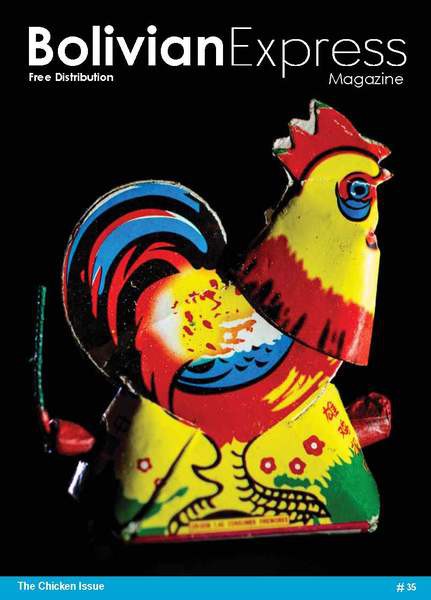
Wilmer Machaca savours some of La Paz’s most traditional market delicacies
Cuellitos (Chicken Necks)
Doña Wilma has been selling deep-fried chicken necks with potatoes for five years in Villa Pabón. This job has allowed her to maintain her family and become very popular in the area. Today she has a kiosk where she also offers other tasty snacks such as the famous salchipapas. But undoubtedly the most popular are the cuellitos which only cost Bs. 2.50.
The sale of cuellitos began when pollo al spiedo (spitroast chicken) was very expensive and the current fast-food chains didn’t exist. Faced with the impossibility of paying for a chicken portion, many people started to buy cuellitos to treat themselves. Cuellitos were sold for Bs.10 a dozen and Bs.1 each. Now this activity has mainly moved to the city’s outskirts to the traditional micro-snack, where salchipapas, hot dogs, and hamburgers are on sale. Now cuellitos have been included as one of the main products on offer.
Chicken feet and gizzard soup
Mercado Uruguay is one of the cheapest and most popular markets in La Paz. It offers a wide, and very distinctive, variety of products. In its laberynthine passageways you can find everything from live animals such as chicks, dried grains, cow and chicken innards, charque, vegetables, to cooked food—the whole food chain. Given its location between Max Paredes and Buenos Aires avenues, the diners in this market are generally street peddlers, lustrabotas, aparapitas and destitute people, who for Bs.3 can buy a plate of food such as peanut soup or chairo with innards and chicken feet. Plus their nectar refresquito (boiled fruit juice).
Fried Chicken LiverAlthough there isn’t a specific place where fried chicken liver is sold, this dish is mainly consumed by families at home. It is popular especially in the department of Tarija. Its consumption is also encouraged by doctors and family members to combat anaemia, and to aid the nutrition of pregnant women. Doña Guadalupe Paco told us that she started eating chicken liver when she was 29 and expecting her third child and was diagnosed with anaemia and a high-risk pregnancy. Now, fried chicken liver is a habitual part of her family’s diet.
The most profound minds of all time have felt compassion for animals
Friedrich Nietzsche
Several years later I travelled the city in search of this cruel practice. I started in Mercado Uruguay, famous for selling animals. Chickens, hens, guinea pigs, and even a black rooster, stood idle and overcrowded. Yet no sign of the multi-coloured chicks.
I turned to the endless El Alto Market. After asking more than 10 caseritas, and receiving an equal number of directions, I arrived at a place where many animals awaited their similarly uncertain future. Yet no coloured chicks.
The Mendoza-Donlan family explain what it is like to keep chickens as pets.
A dog got the twins Gumble and Dinky (RIP) when they were chicks. Gumble had an afro. We gave them a good burial on the land at the bottom of the garden. We were left with three: Queen Victoria, Vanilla and Miss Money Penny. Victoria recently left us. We’re going to miss her. She was the head hen, she would boss the other two around.
We didn’t know how to look after hens. We didn’t raise them like hens, we raised them like kittens. They would sit on our laps and we would stroke them. They are so tame; they don’t know they are hens.
When they were still quite small I took my friend out to meet the chickens in their coop. And all of a sudden I noticed the diamond out of my engagement ring had gone. You know, they are attracted to glittery things. And then what do we do? This whole debate, do we kill them? It could have been Queen Victoria or Miss Money Penny. We spent days looking for it in their poop. A friend suggested it may have ended up in their gullet. There is only one way to be sure, he said. But at that point we made a big life decision to not kill them—even if they have swallowed a diamond.

 Download
Download





















